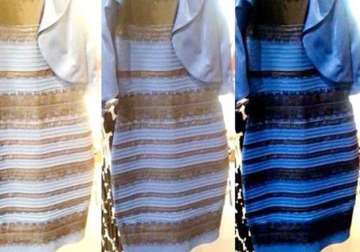Washington: MIT scientists have cracked the science behind the dress that went viral on the internet after some saw it as black and blue while others perceived it to be gold and white.
In a survey of 1,400 individuals, with over 300 who had never seen "The Dress" before, researchers found that people who perceive it as white and gold may have just been exposed to natural daylight, while those who saw a black and blue garment may spend most of their time surrounded by artificial light sources.
Neuroscientist Bevil Conway believes "The Dress" phenomenon marked the greatest extent of individual differences in colour perception ever documented.
In February, 21-year-old singer named Caitlin McNeill had posted a picture on her blog of a dress that was blue and black but was being seen as white and gold by some people. The dress went viral on the internet, with celebrities such as Taylor Swift jumping in to debate the colour.
Conway, who teaches at Wellesley College and the Massachusetts Institute of Technology, and his team designed an experiment in which they asked people to identify the colours they saw on "The Dress" from a full palette.
They found impressive individual differences in colour perception; they also found that people fall into one of three camps corresponding to the main groups identified by social media: a blue/black camp, a white/gold camp, and a smaller blue/brown contingent.
"It could have been the case that you had a continuum of perceived colours, but if you plot the colours people picked, you see two main clumps falling into the two categories for what words people used to describe the colours of 'The Dress,'" said Conway.
Researchers also found that older people and women were more likely to report seeing "The Dress" as white and gold, while younger people were more likely to say that it was black and blue.
Conway believes that these differences in perception may correspond to the type of light that individuals' brains expect to be in their environment. People who see "The Dress" as white and gold may have just been exposed to natural daylight, while those who saw a black and blue garment may spend most of their time surrounded by artificial light sources.
The brains of those who saw a brown and blue dress are likely used to something in between.
"One framework for understanding why you get these variations is to consider how light is contaminated by outside illumination, such as a blue sky or incandescent light," said Conway.
"Your visual system has to decide whether it gets rid of shorter, bluer wavelengths of light or the longer, redder wavelengths, and that decision may change how you see 'The Dress'," he said.
The study is published in the journal Current Biology.
Latest World News
